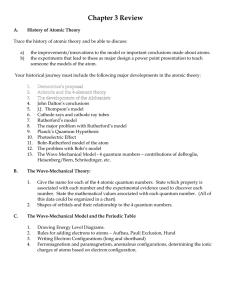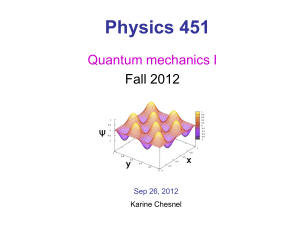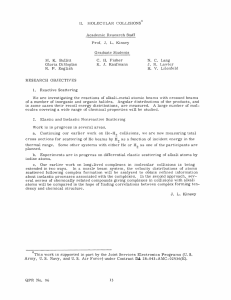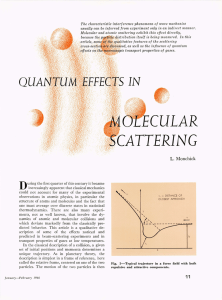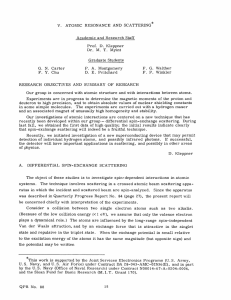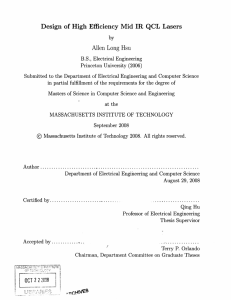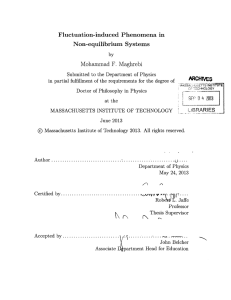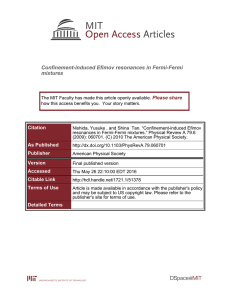Introduction to Modern Physics (PHYSICS 211)
advertisement
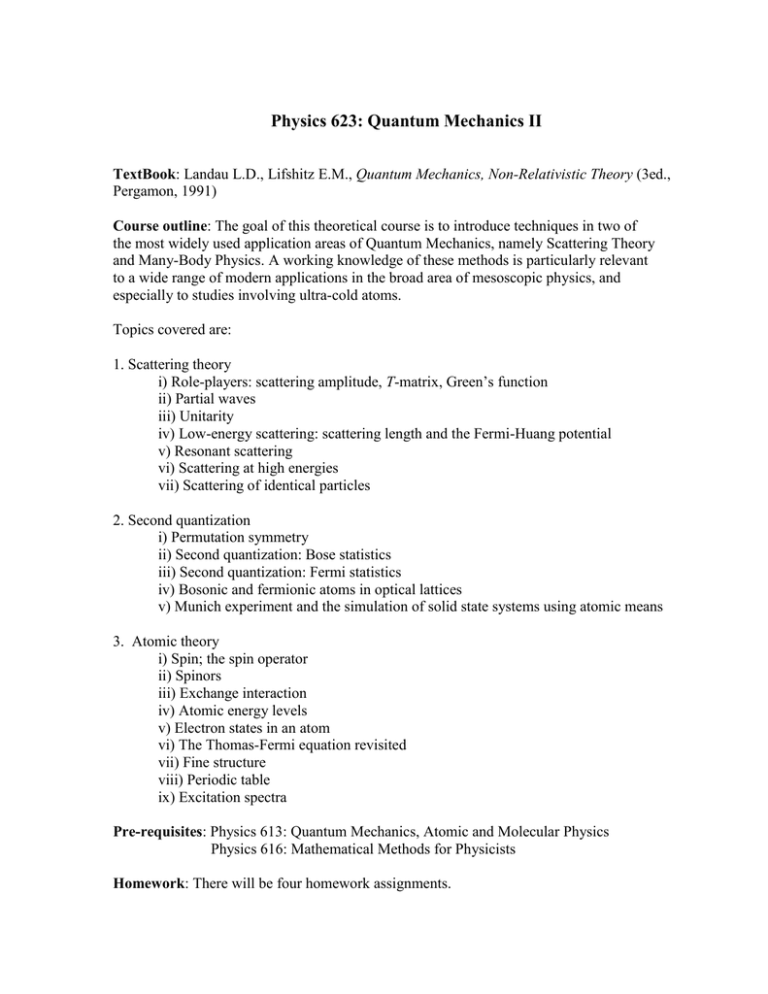
Physics 623: Quantum Mechanics II TextBook: Landau L.D., Lifshitz E.M., Quantum Mechanics, Non-Relativistic Theory (3ed., Pergamon, 1991) Course outline: The goal of this theoretical course is to introduce techniques in two of the most widely used application areas of Quantum Mechanics, namely Scattering Theory and Many-Body Physics. A working knowledge of these methods is particularly relevant to a wide range of modern applications in the broad area of mesoscopic physics, and especially to studies involving ultra-cold atoms. Topics covered are: 1. Scattering theory i) Role-players: scattering amplitude, T-matrix, Green’s function ii) Partial waves iii) Unitarity iv) Low-energy scattering: scattering length and the Fermi-Huang potential v) Resonant scattering vi) Scattering at high energies vii) Scattering of identical particles 2. Second quantization i) Permutation symmetry ii) Second quantization: Bose statistics iii) Second quantization: Fermi statistics iv) Bosonic and fermionic atoms in optical lattices v) Munich experiment and the simulation of solid state systems using atomic means 3. Atomic theory i) Spin; the spin operator ii) Spinors iii) Exchange interaction iv) Atomic energy levels v) Electron states in an atom vi) The Thomas-Fermi equation revisited vii) Fine structure viii) Periodic table ix) Excitation spectra Pre-requisites: Physics 613: Quantum Mechanics, Atomic and Molecular Physics Physics 616: Mathematical Methods for Physicists Homework: There will be four homework assignments. Exams: There will be one mid-term exam, and one final exam. Grading: The total grade will consist of: assignments 30%, mid-term exam 20%, final exam 50%. Example of additional references: M.P.A. Fisher, P.B. Weichman, G. Grinstein, and D.S. Fisher, "Bose localization and the superfluid-insulator transition", Phys. Rev. B 40, 546 (1989) D. Jaksch, C. Bruder, J. I. Cirac, C. W. Gardiner, and P. Zoller, “Cold Bosonic Atoms in Optical Lattices”, Phys. Rev. Lett. 81, 3108 (1998) M. Greiner, O. Mandel, T. Esslinger, T.W. Hänsch, and I. Bloch, “Quantum phase transition from a superfluid to a Mott-insulator in a gas of ultracold atoms”, Nature 415, 39 (2002). STATEMENT ON DISABILITY ACCMMODATIONS: Section 504 of the Americans with Disabilities Act of 1990 offers guidelines for curriculum modifications and adaptations for students with documented disabilities. If applicable, students may obtain adaptation recommendations from the Ross Center for Disability Services, M-1-401, (617-287-7430). The student must present these recommendations and discuss them with each professor within a reasonable period, preferably by the end of Drop/Add period. STUDENT CONDUCT The Code of Student Conduct provides a framework of standard acceptable behavior for students. It is set forth to give students general notice of prohibited conduct; it should not be regarded as an exhaustive definition of misconduct or construed as a contract between the student and the University. Students are responsible for understanding and complying with this Code. Copies of the Code of Student Conduct are available in the Office of the Vice Chancellors for Academic and Student Affairs, in the undergraduate catalog and graduate bulletin, in the UMass Boston Student Handbook, and on the University's website. http://www.umb.edu/life_on_campus/policies/code/



